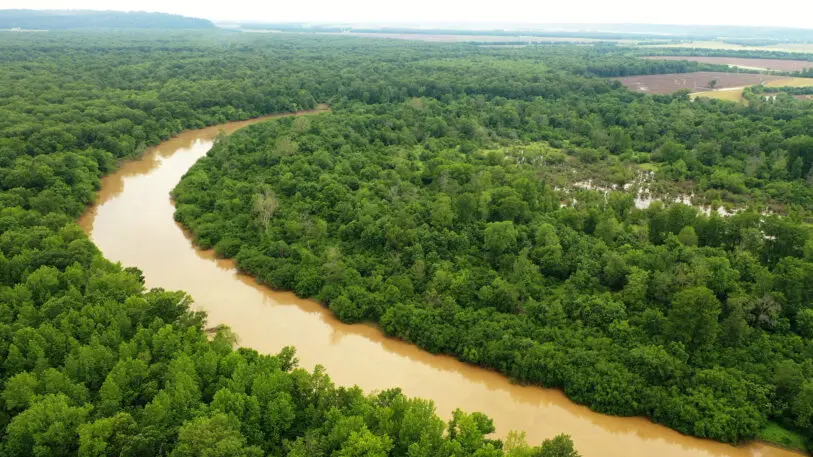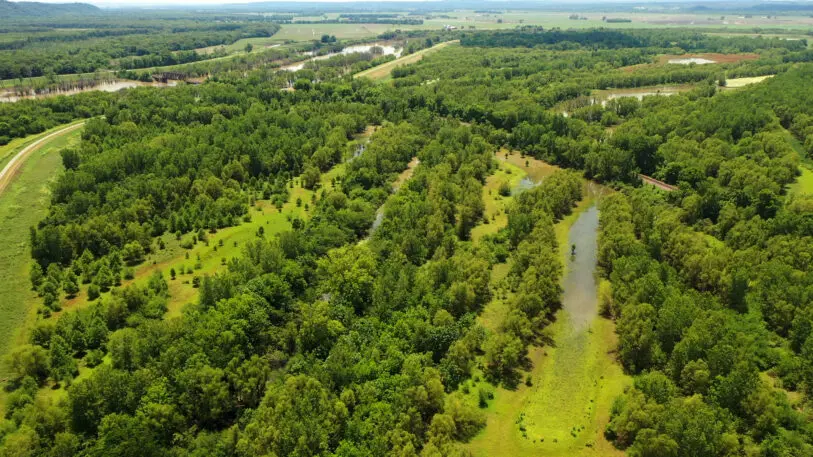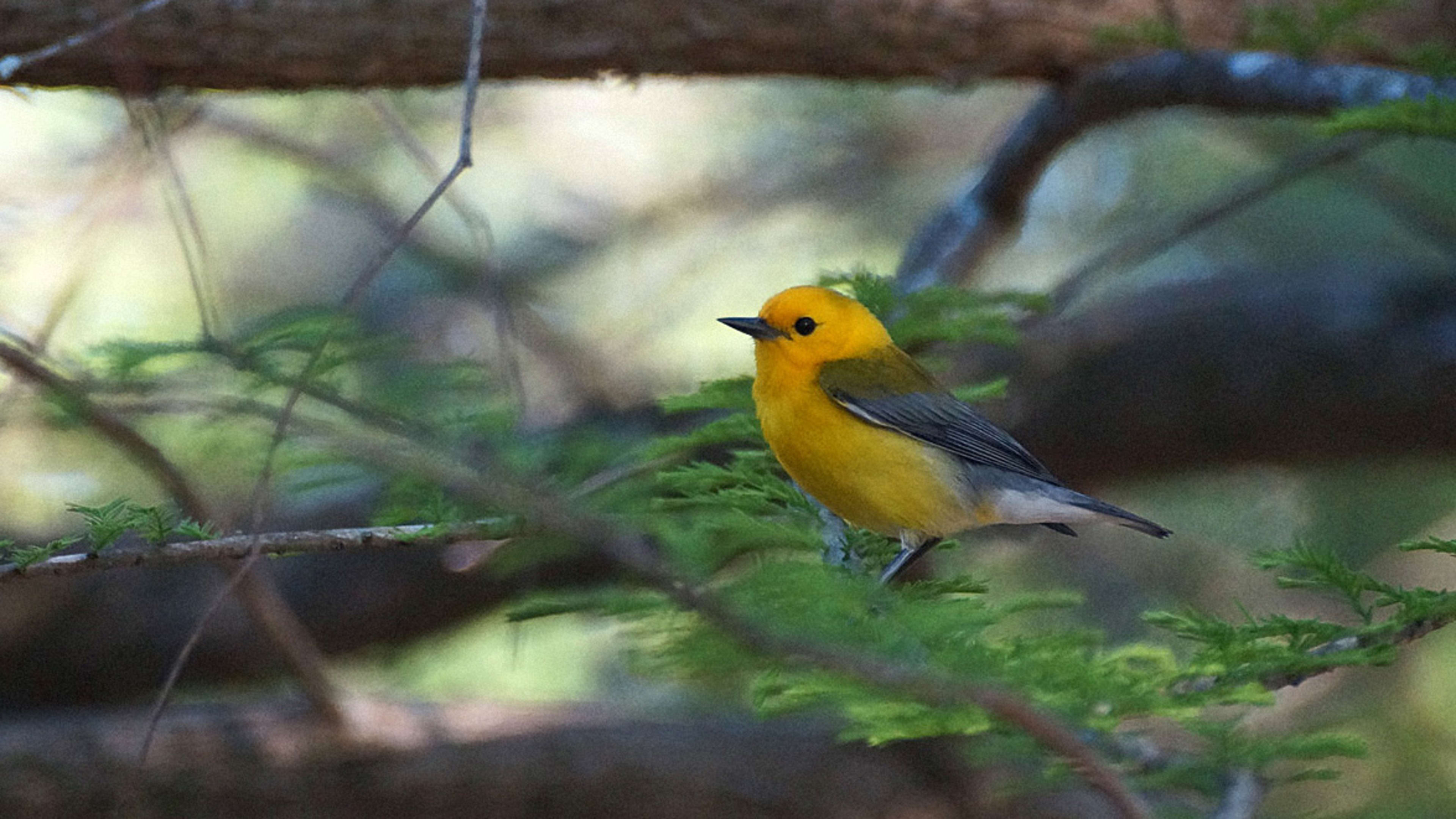On a farm growing cotton and corn in Panola County, Mississippi, 680 acres will soon be planted with nearly 300,000 oaks, sycamores, and other native trees. The farm is part of a pilot project in the region that’s paying landowners to permanently restore forest on more than 3,000 acres—an area more than three and a half times the size of Central Park.
Ducks Unlimited, the organization behind the project, is part of a coalition of partners that hopes to restore and protect two million acres of forest in the Lower Mississippi Alluvial Valley over the next two decades. That’s still only a small fraction of what once existed in places like western Mississippi and Tennessee and eastern Louisiana and Arkansas.

“Almost all of it was forested pre-settlement,” says Jerry Holden, the director of Ducks Unlimited’s southern region. Large chunks of the forest were lost as recently as the 1970s, when federal farm policy pushed farmers to steeply increase the amount of food that the U.S. exported to the rest of the world. “A lot of the forest that hadn’t yet been cut down was cut, pulled into windrows, and burned, so that we could grow more soybeans,” he says. “That’s recent enough that it’s in people’s memories.”
Replanting part of the forest can help birds, which use the floodplain as a major migration route. (The project is called Flyway Forests because the route is called a flyway.) It can also help other wildlife, like the Louisiana black bear, especially as fragments of reforested land begin to be connected into a larger whole. For people living in the area, it can decrease the risk of flooding and improve water quality.
And it can help the climate: Pachama, a company that uses satellite images and other technology to measure carbon stored in forests, has estimated that the initial pilot, which will plant more than a million trees, can store as much as 415,000 tons of carbon over the next 40 years. Carbon credits will fund the work, though for Ducks Unlimited, “the carbon’s a mean to an end,” says Holden. “The land protection is the objective.”

It’s important that landowners can be paid enough that it’s worthwhile for them to make the switch, since farmers making a living from the land now are unlikely to voluntarily give some of it up. “You really do have to price these credits and sell them in a way that allows us to compensate landowners for that opportunity cost,” says Lauren Alleman, carbon program specialist at Ducks Unlimited. Farmers will make $2,200 per acre over five years for allowing the nonprofit to permanently restore part of their land, and will get paid from the beginning, before any carbon credits are sold.
Mike Bartlett, one of the first farmers to participate in the program, says that he will lose some income by giving up some of his fields, but he wanted to do it in part because of his love for this type of hardwood forest and the environmental benefit.
“It comes with some sacrifice on our part because roughly two-thirds of the property we enrolled is rich creek bottom land, which brings in considerable annual income from rent for cotton and corn,” he says. “At age 81, I’ve grown weary of seeing all of the expensive inputs in the form of commercial fertilizer, herbicides, and insecticides applied to those soils.”
On the first four properties participating in the program, with a cumulative 1,220 acres, site preparation work is starting now. Ducks Unlimited will begin planting trees next February on those farms. Another round of properties will be planted in 2025.
“The trees are really productive in this part of the world, which is one of the really cool things about this,” says Alleman. “We expect them to grow so rapidly that by six years from February, we’ll be able to do our first verification event and bring those credits to market.”

The program may be able to avoid some of the controversy that surrounds some other forest carbon credits. First, while some programs try to protect existing forests, it’s harder to prove that those trees would have otherwise been cut down; showing that new trees were planted is much more straightforward. Pachama, which is partnering on the project, can track the reforested areas in detail using its technology, and Ducks Unlimited will do additional monitoring in person.
And while this isn’t the only program to pay landowners to plant trees, it’s unusual in that it includes conservation easements that will permanently protect the trees, even after the 40-year carbon credit program ends. Because of the contract that landowners sign, it doesn’t matter if the land is sold—the next owner will have to leave the trees in place. Wildfires are also a risk, but like other forest carbon credits, the system is set up with a “buffer pool” of extra trees as a sort of insurance policy if some trees are lost to fire. (Some carbon is also stored in the soil, and with the forest permanently protected, other trees will also regrow if there is a fire.)
“This is a landscape-level opportunity to change habitat back to what it used to be,” says Alleman. “And I think those easements are the vehicle for that.”
Diego Saez Gil, Pachama’s CEO, says that when he speaks with sustainability directors at large companies, there’s an appetite for high-quality carbon removal offsets like this. “They all continue to make clear that they will continue to invest in nature and to take responsibility for their carbon emissions with carbon markets,” he says. Though the overall carbon market has been declining, Pachama is growing.
The benefits beyond capturing carbon are also clear. As the first seedlings grow, in fields that are no longer being plowed, the grasslands around them will support songbirds and other small wildlife. Then, “as the the canopy closes in 20 years, it’ll be a really beautiful, mature oak-dominated bottom land hardwood forest,” Alleman says. “That’ll provide more of the shading, the connectivity for bigger wildlife—the turkeys, the deer, the bears.” Pachama is also helping to track changes in biodiversity, including through kits that test DNA found in streams in the area. (On some farms, some areas may be restored as wetlands or grasslands instead of forests, and Ducks Unlimited may eventually separately sell biodiversity credits for those areas.)
After running the pilot, the goal is to dramatically grow the work. Ducks Unlimited wants to see proof that there’s strong demand both from landowners and from companies that want to buy high-quality carbon credits. “I don’t think there’s any shortage of acres,” says Alleman. “I don’t think there’s any shortage of landowners. The cool thing about piloting is that we’re learning by doing every day. We’re gathering more data, we’re learning so much, and getting smarter about it. So I don’t have any doubt about scaling. It’s just how quickly it can be scaled.”
Recognize your brand’s excellence by applying to this year’s Brands That Matter Awards before the early-rate deadline, May 3.
